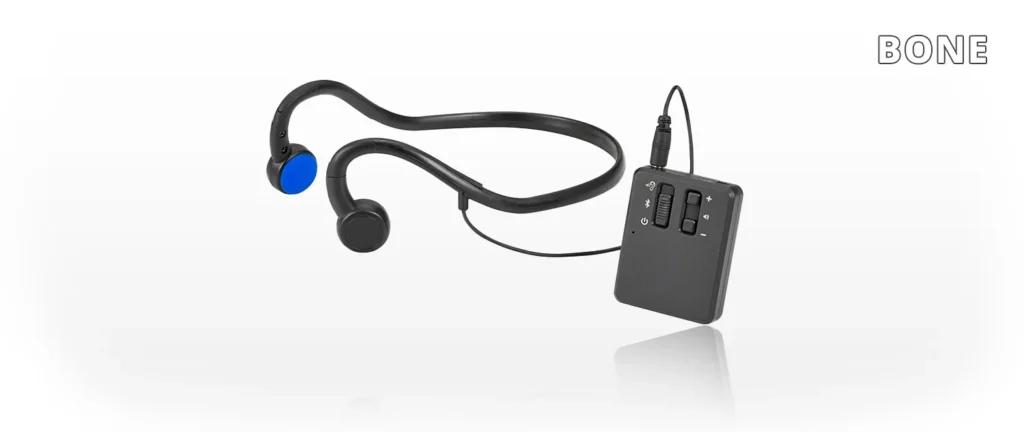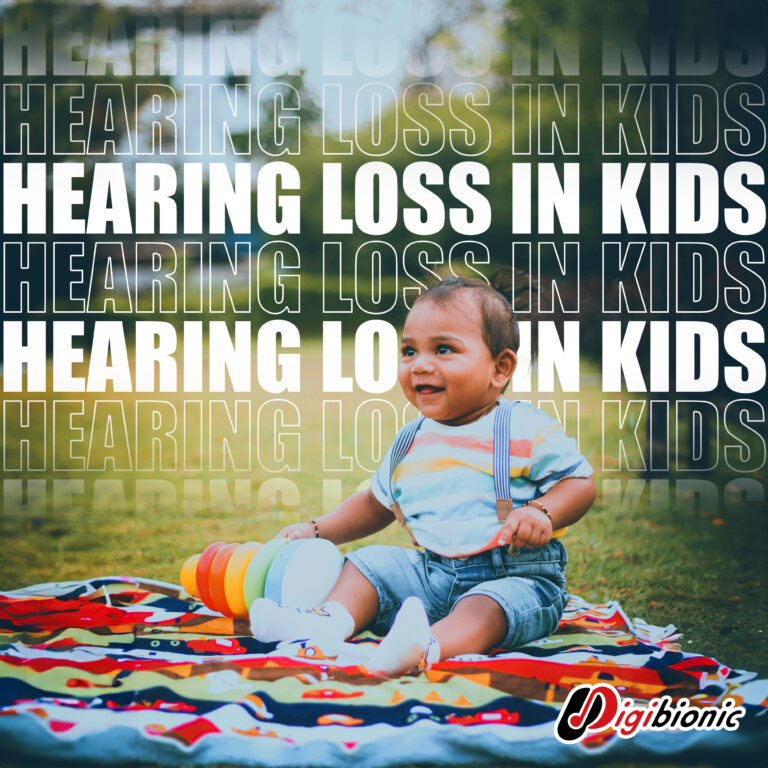Which hearing aid is right for you?
- May 22, 2024
- Written By Digibionic India

- Hearing aids that go behind the ear ( BTE: behind the ear)
- Behind-the-ear hearing aids with speakers plugged into the ear canal (RIC: Receiver in the canal)
- In-the-ear hearing aids (ITE: in the ear)
- In-the-canal hearing aids (ITC: in the canal)
- Hearing aids inserted into the ear canal (CIC: completely in the canal).
- Wireless stereo hearing aid Equipped with a Bluetooth connection function.
As technology progresses, hearing aids are becoming more modern in appearance. When choosing a hearing aid, individuals frequently inquire about the possibility of obtaining the smallest and most discreet model that can be concealed within the ear. The response is affirmative, but the suitability of smaller hearing aids varies depending on the severity of the user’s hearing loss.
The size of the ear canal and the features of the hearing aids play significant roles in the selection process. Therefore, when choosing a hearing aid, it’s essential to consider professional advice from an audiologist based on the user’s hearing level and requirements, rather than solely relying on personal preference. Regarding the appearance of your hearing aid, the following options are commonly utilized:
Hearing aids that go behind the ear ( BTE: behind the ear)
Behind-the-ear hearing aids are positioned behind the ear and utilize ear tips or ear molds to deliver sound through a sound tube to the user’s ear canal, making them suitable for individuals with a range of hearing loss, from mild to severe.
The larger area of ear-loop hearing aids allows for the incorporation of additional specialized features such as a telephone coil (T-Coil), directional microphone, and direct audio input (DAI) function. These devices are particularly valuable for young children with hearing loss, serving as auxiliary tools in educational settings. Now, let’s explore some advantages of this model for sound amplification.
Hence, it is well-suited for individuals with severe hearing loss, as the larger unit and components facilitate ease of use, making tasks such as battery replacement and volume adjustment more convenient for the wearer.
The microphone and speakers in the hearing aid are situated at a distance from each other, reducing the likelihood of whistling. Additionally, the device boasts numerous special features such as a directional microphone, telephone coil (T-Coil), and direct audio input (DAI) function.
Ideal for children, as their ear canals are still developing, rendering in-ear hearing aids unsuitable. Moreover, individuals with chronic otitis media, characterized by pus in the ear canal, risk damaging in-ear hearing aids easily. Thus, wearing a behind-the-ear hearing aid is recommended in such cases.
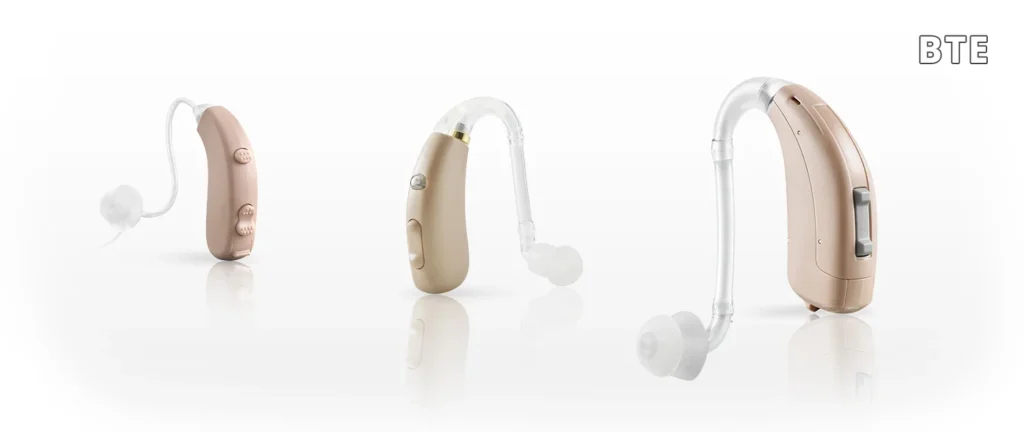
Behind-the-ear hearing aids with speakers plugged into the ear canal (RIC: Receiver in the canal)
In recent years, there has been a growing trend towards smaller, more discreet behind-the-ear hearing aids with speakers inserted into the ear canal. These devices feature a compact design, with the speaker (receiver) connected to the hearing aid via a speaker cable and positioned directly in the ear canal.
The benefit lies in the ability to not only minimize the size of ear-loop hearing aids but also to choose speakers with varying output levels suitable for different degrees of hearing loss. Thus, individuals ranging from mild to severe hearing impairment can utilize them, with those with mild impairment opting for ear tips.
Opt for an open design to experience a more natural sound quality without any discomfort. Individuals with severe hearing loss may prefer closed or molded ear tips, still allowing them to benefit from the compact size of behind-the-ear hearing aids.
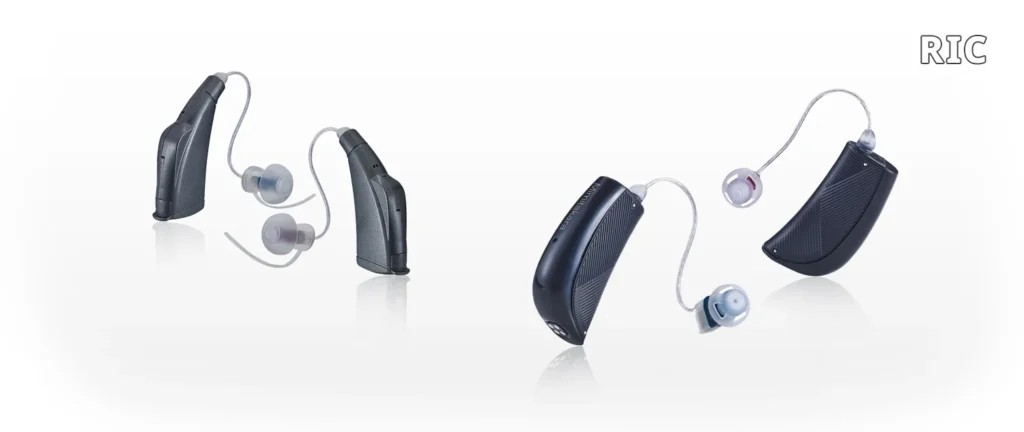
In-the-ear hearing aids (ITE: in the ear)
In-the-ear hearing aids are tailored to fit the user’s ear canal shape and are notably less conspicuous than behind-the-ear models. Apart from their aesthetic appeal, these devices position the speakers closer to the eardrum within the ear canal, eliminating the need for excessively high volume levels.
Nevertheless, in contrast to behind-the-ear hearing aids, the drawback is the limited internal space and speaker amplification power, rendering it unsuitable for individuals with severe or profound hearing loss. Additionally, its small size may pose handling challenges.
In-the-canal hearing aids (ITC: in the canal)
In-the-canal hearing aids are smaller than canal hearing aids and are worn on the cartilage part of the ear canal. They are more discreet than in-ear models, making them less noticeable. However, they have limitations and provide less amplification, making them suitable for individuals with moderate to severe hearing loss.

Hearing aids inserted into the ear canal (CIC: completely in the canal).
This model is designed to be inserted deeper into the ear canal, making it difficult to notice when viewed from the front. Only a transparent pull cord extends beyond the ear canal for easy removal. Of course, there are advantages to using hearing aids that sit deep in the ear canal, including aesthetic appeal.
Furthermore, there are additional benefits, such as the ability to be worn deep into the ear canal, resulting in a higher rate of sound amplification. This design has a lesser impact on blocking the external auditory canal and reduces the likelihood of ear wax blockage, leading to better preservation.
Downsides of in-ear canal hearing aids include their susceptibility to moisture or dirt buildup due to their placement within the ear canal. Hence, regular cleaning and maintenance checks at the store are essential. However, a drawback is that their small size prohibits the accommodation of large speakers.
Hence, it may not be appropriate for individuals with severe hearing impairment. Moreover, its small size might pose challenges for elderly users. It is best suited for those with mild to moderate hearing loss.
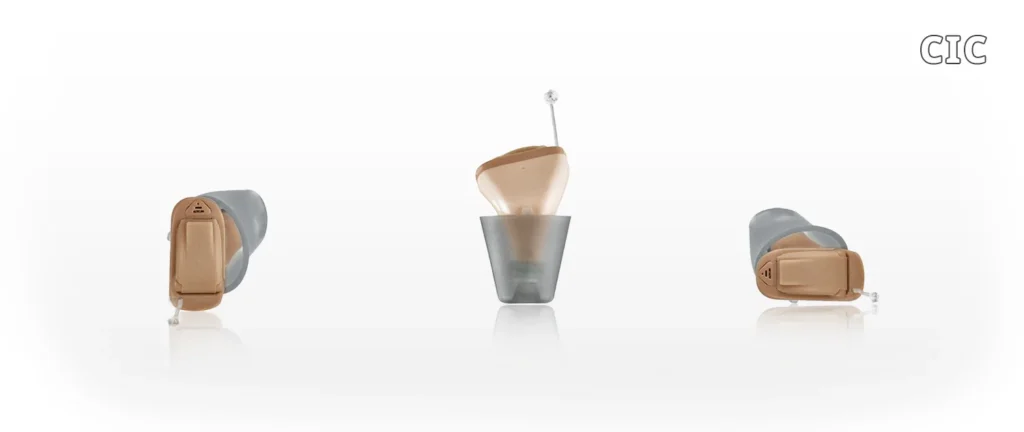
Wireless stereo hearing aid Equipped with a Bluetooth connection function.
Designing the aid to resemble a Bluetooth headset not only maintains its appearance but also addresses concerns about hearing aids being too small for seniors to handle. The headset’s simple appearance offers several advantages that are lacking in smaller hearing aids.
The device is relatively large, allowing for the incorporation of additional functions and maintaining a high sound power output. It is suitable for individuals with moderate to severe hearing loss. By altering the appearance to resemble Bluetooth headphones, the apparent drawbacks of traditional bulky hearing aids can be transformed into a modern accessory.
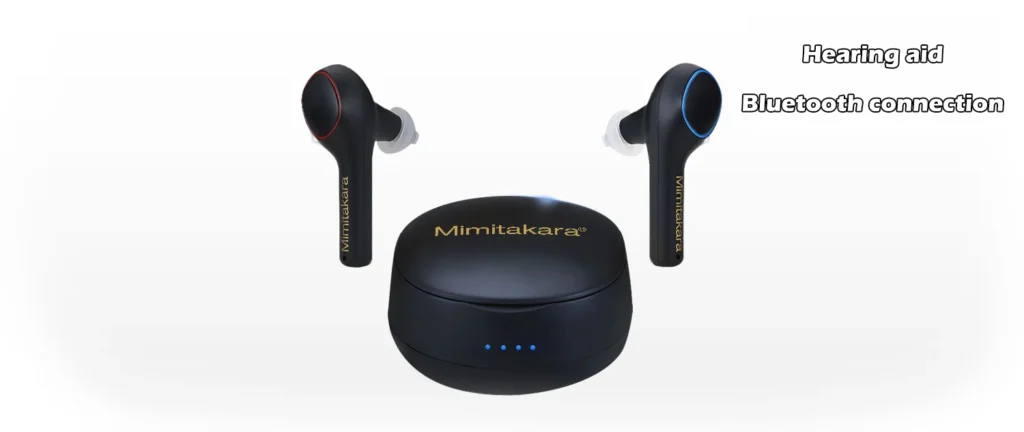
The six types mentioned above are among the most prevalent hearing aids available today. Additionally, there are other varieties such as pocket hearing aids, which are larger and better suited for individuals with severe to profound hearing loss due to their easier handling.

Bone conduction hearing aids amplify sound by transmitting electrical currents to vibrate the skull, which then stimulates the inner ear. These devices typically feature a headband-shaped design and are ideal for patients experiencing hearing impairment due to issues with electrical conduction or a narrowed ear canal (microtia). Through the aforementioned recommendations, we gain insight into the advantages, disadvantages, and appropriate uses of different types of hearing aids.
However, the preferred method relies on the decision of the hearing aid user following consultation with a specialist. The selection of a hearing aid should not be based solely on appearance. Factors such as sound performance, convenience, and the user’s daily life circumstances should also be taken into account, as they are deemed equally significant.
